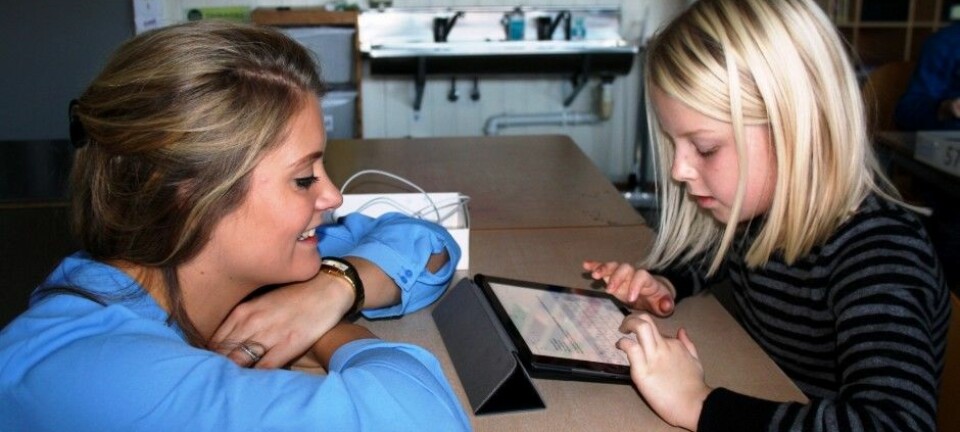This article was produced and financed by Norwegian centre for E-health research

How young people with disorders become more independent
Tablets and smartphones help children and young people with various disorders to become more independent.
Researchers have surveyed the experiences of all the Nordic countries on how young people with disorders use welfare technology as a pastime. This could be apps that notify you of tasks, as well as other social communication tools.
The researchers were asked by the Norwegian Directorate of Health’s national welfare technology program to assess what is needed for young people with disorders to more easily participate in and master leisure activities with the support of welfare technological solutions. They did this by looking at several different studies on the subject.
"We have achieved a good starting point to be able to write our recommendations, and we have identified both the benefits and challenges of using such technology," says Undine Knarvik, one of the researchers.
Follow-up is essential
Much depends on the preparations and not least the digital competence of the people around the person who will be using the technology. It is not enough just to acquire it.
"You must do a proper assesment of the particular person in order to identify the right technology. Then you must determine the required training, not only for the user, but also in their support network. The need for this is frequently underestimated," explains Marianne Trondsen.
According to the two researchers, the survey is important because two people with the same diagnosis may have very different challenges and very different resources in the network around them. This is also essential for the next step, which is the follow-up.
"After the technology has been adapted to the user and the range of use, and after practicing, there must be user support available both on the technology itself and on its use. Otherwise, it is easy to fail," says Trondsen. In the report, the researchers point out that there is frequently a lack of such user support.
"In many ways, this group is particularly vulnerable to unforeseen issues related to the technology. Therefore, both the survey in advance and the continued user support are essential," says Knarvik.
Researchers have seen that users run into problems due to everything from lack of knowledge and motivation of the people around them, to the tools simply breaking because they fall on the floor or they cannot be updated because the components come from different suppliers.
Apps and smartphones
The material the e-health researchers have surveyed is somewhat limited.
The researchers are not surprised that there are few studies in this area.
"However, there is a paradox in that we have not made more progress, despite the stated commitment to this group. We have found significantly more documentation on welfare technology for the elderly who reside at home than for this group," says Knarvik.
The scope in both technology, diagnoses and age is large in the 14 studies from which the researchers have collected knowledge. They have found documentation on experiences with everything from apps on a regular smartphone to sophisticated robots.
The technology has been tested on relatively few users, and most of the trials have been done with children and young people with ADHD and/or autism spectrum disorders, cerebral palsy, Down syndrome and Asperger syndrome, the researchers inform. On the other hand, the studies are very rigorous.
Most of the material is related largely to the use of smartphones and tablets with apps. Examples of this are calendaring, alert systems for tasks, navigation systems and social communication tools.
The purpose of the technology is to make the individual more independent, and that he or she can master activities of everyday life through structure, routines and reminders. The main focus seems to be on providing support for social participation, and that the user can carry out daily tasks. Much of the technology aims to support communication between persons related to the user, such as parents, youth organisers and support persons.
Good adaptation
"Common to all the success stories is that the equipment is properly adapted to the individual user, and that enough training has been given. Not only of the person using the equipment, but also of the people around them. Finally, it is important to provide follow-up; a place for user support that can assist when they get stuck," says Trondsen.
According to the researchers, the documentation shows the opportunities welfare technology give this group in particular.
Children and young people with disorders grow up in a digital society as well. Some everyday technology is already integrated in their homes. The motivation to make use of welfare technology, both for users and for the network around them, is usually very good.
"Much of the technology is considered to be relevant, useful and motivating, both seen from the children's and parents' standpoint. We also find examples that welfare technology can give parents a break, because it makes the children able to keep themselves busy to a larger extent," says Knarvik.
































